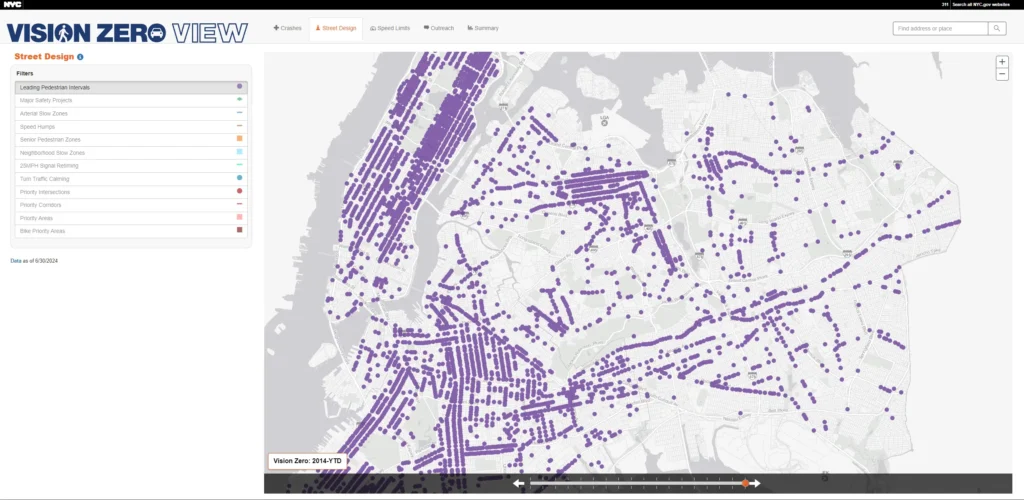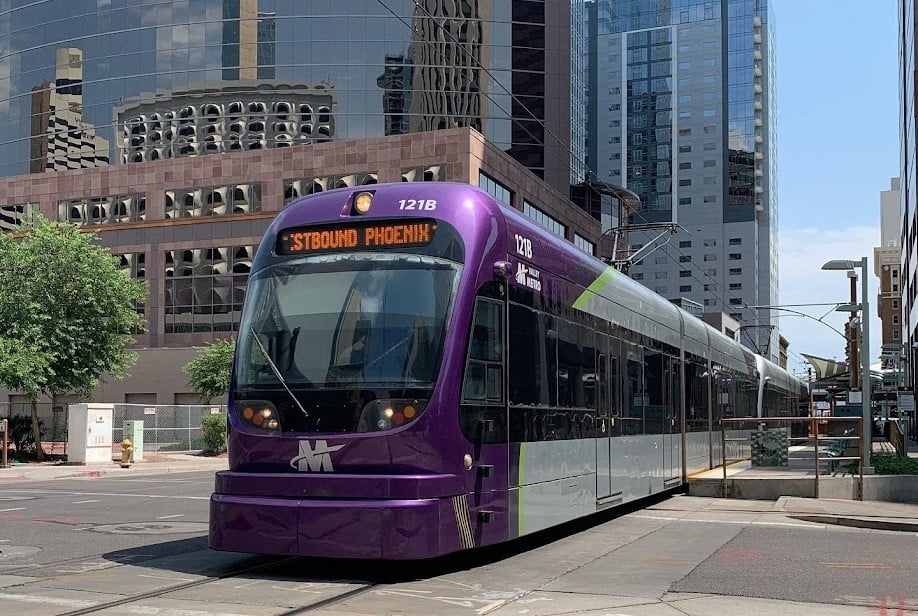Walking in our neighborhoods and city should feel safe. Unfortunately, crossing the street can feel like you’re fist bumping the Grim Reaper. Leading Pedestrian Intervals (LPIs) offer a solution that feels like a cheat code to beat these Frogger-inspired road designs.
What is a Leading Pedestrian Interval?
A LPI gives pedestrians a head start when crossing the street. When the light changes, the walk signal comes on a few seconds—usually 3-7 seconds—before the green light for cars. This head start makes pedestrians more visible to turning drivers, reducing the risk of accidents. Think of it as giving pedestrians a VIP pass at the intersection.
How LPIs Work
Imagine you’re at a crosswalk. When the traffic light turns green for cars, the walk signal for pedestrians typically turns on at the same time. In this scenario, drivers are often focused on accelerating through the intersection, and their attention is primarily on other vehicles, not on pedestrians stepping off the curb. This can make it difficult for drivers to notice pedestrians, increasing the risk of pedestrians getting hit.
With a Leading Pedestrian Interval (LPI), the walk signal for pedestrians is programmed to turn on a few seconds (usually 3-7 seconds) before the light turns green for vehicles. This head start allows pedestrians to begin crossing the street while vehicles still face a red light. By the time drivers receive their green light, pedestrians are already well into the crosswalk and are much more visible.
LPIs are particularly beneficial in areas with left-turning vehicles. Drivers making left turns often focus on finding gaps in oncoming traffic, which can lead to overlooking pedestrians crossing the street. By giving pedestrians a head start, LPIs ensure that drivers making left turns are more likely to see pedestrians already in the crosswalk, thus reducing the chances of a person getting hit.
Benefits of LPIs
- Increased Safety: Studies show that LPIs can reduce vehicles hitting people and children from 13% all the way up to 60%.
- Better Visibility: Pedestrians are more visible to drivers, especially those making left-hand turns.
- Ease of Implementation: Many traffic lights can be adjusted to include LPIs with minimal cost. Literally, in most cases, could just be reprogramming the light. Cities may throw some bureaucracy bucks for a study that will say a few seconds may delay cars at the cost of saving lives.
Real-World Examples
Cities around the world use LPIs to protect pedestrians. San Francisco, Washington D.C., and Los Angeles have embraced the benefits of LPIs. New York City is a leading example, having implemented LPIs at over 2,500 intersections as part of its Vision Zero initiative, which aims to eliminate traffic deaths and serious injuries. The results have been promising, with a notable reduction in pedestrian crashes at intersections with LPIs.

Implementation and Costs
Implementing LPIs is relatively straightforward and cost-effective. Most modern traffic signal systems can be reprogrammed to include LPIs without requiring new equipment. The primary cost is the time and labor needed to adjust the timing of the signals, making LPIs an attractive option for cities aiming to improve pedestrian safety without significant financial investment.
The Federal Highway Administration estimated the cost to change the light at each intersection ranges from $200 to $1,200. If a new traffic signal is required, the costs will increase due to the new installation, not the LPI adjustment. It’s surprising that such a simple, life-saving measure isn’t already standard. Just program the light, bro!
Considerations
While LPIs are effective, they aren’t the only solution. There are other ways to further improve intersections and make LPIs even more effective:
- Curb Extensions: To enhance the benefits of LPIs, curb extensions can be implemented. These extensions shorten crossing distances and increase pedestrian visibility.
- Timing: The Manual on Uniform Traffic Control Devices (MUTCD) recommends a minimum LPI timing of 3 seconds to allow pedestrians to cross at least one lane. For wider roads or areas with high foot traffic, the National Association of City Transportation Officials (NACTO) recommends closer to 10 seconds.
- Other Measures: While LPIs are beneficial, areas with high pedestrian and vehicle traffic might require additional measures, such as a pedestrian scramble, where all traffic is stopped to allow pedestrians to cross in every direction simultaneously.
Advocacy and Policy
Advocacy groups are essential in pushing for the use of LPIs. Organizations that focus on pedestrian safety and urban planning are often at the forefront, asking our cities to adopt safety devices, such as LPIs. It will most likely take the will of the council to make a shift in policy and establish a standard for implementing LPIs in our communities.
Final Thoughts
The adoption of LPIs is a step in the right direction for creating safer, more walkable cities. By prioritizing pedestrian safety, we can encourage more people to walk, leading to healthier communities and more vibrant spaces. LPIs are a testament to how a small change in traffic signal timing can lead to significant improvements in public safety. While cars can exist as the king of the road on highways, pedestrian can be the king of the streets on our local streets.
References
- National Association of City Transportation Officials (NACTO), “Leading Pedestrian Interval.” Urban Street Design Guide, n.d.,.
- New York City. “Home.” Vision Zero View, n.d.,.
- Federal Highway Administration. “Leading Pedestrian Interval.” Proven Safety Countermeasures, n.d.,
- Manual on Uniform Traffic Control Devices (MUTCD), Section 4I.06. FHWA, (2023).


